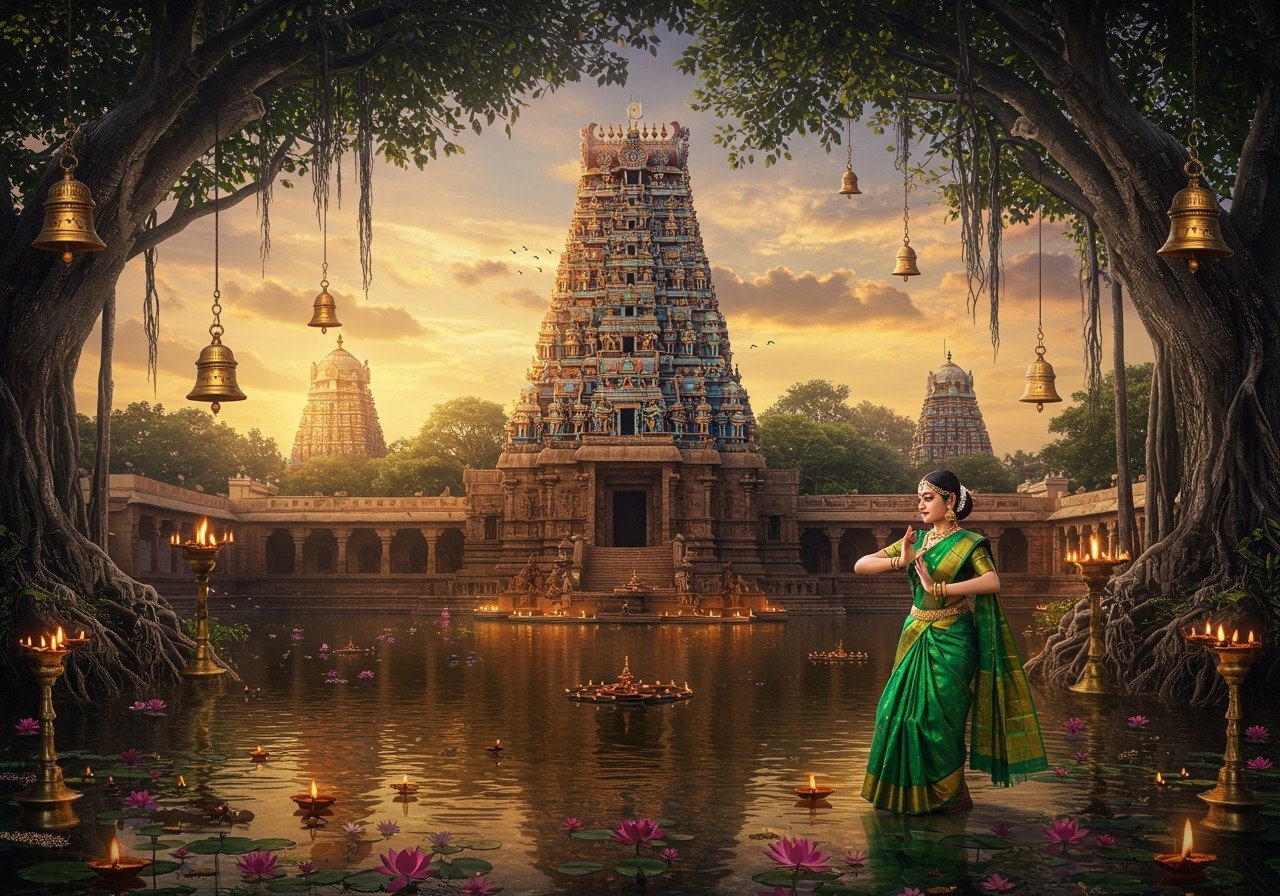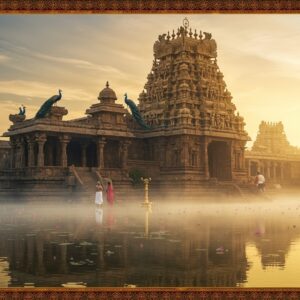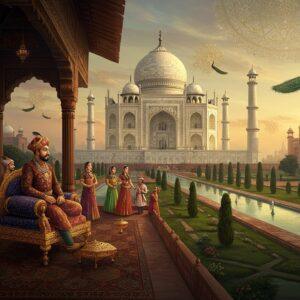
Chennai, formerly known as Madras, seamlessly blends modernity with a rich, vibrant heritage. This exploration delves into the historical and cultural significance of Chennai’s renowned temples, from their architectural grandeur to their age-old rituals, uncovering the essence of the city’s spiritual landscape. These sacred spaces are more than just places of worship; they stand as guardians of tradition, art, and the vibrant tapestry of community life. As highlighted in recent studies, the ancient temples in Chennai are significant for their spirituality, history, and art, offering insights into the city’s cultural heritage. These temples serve as important cultural centers and are known for their architectural marvels and religious significance. Visiting these temples provides an opportunity to understand the people of Chennai and their traditions. The temples are not only places of worship but also reflect the rich history and vibrant culture of the city.
Historical Overview of Chennai’s Temples
Chennai’s temples trace their origins back to the Pallava and Chola dynasties, evolving over centuries and shaping the city’s cultural fabric. The Dravidian architectural style, with its towering gopurams (gateway towers) and intricate carvings, is a prominent feature. Key historical figures and events are often interwoven with these temples, and temple inscriptions offer valuable insights into the social, economic, and political history of the region.
- Contributions of various dynasties: The Pallavas, Cholas, and Vijayanagara empires each left their indelible mark on Chennai’s temples. The Pallavas, known for their rock-cut architecture, laid the foundation for the Dravidian style. The Cholas, renowned for their magnificent temple complexes, expanded and enriched the existing structures. The Vijayanagara Empire further enhanced the temples with elaborate gopurams and mandapas.
- Temples’ role in daily life: Historically, temples served as the heart of the community, playing a vital role in daily life. They were not only places of worship but also centers of education, social gatherings, and economic activity. Even today, temples continue to be integral to the social fabric of Chennai, hosting festivals, rituals, and community events.
Famous Temples in Chennai
- Kapaleeshwarar Temple: This iconic temple in Mylapore, dedicated to Lord Shiva, stands as a testament to Dravidian artistry and is renowned for its vibrant festivals. The temple’s towering gopuram and intricate carvings narrate mythological stories, attracting devotees and art enthusiasts alike. The annual Panguni Peruvizha festival is a major highlight, drawing thousands of devotees.
- Parthasarathy Temple: Dedicated to Lord Krishna, known as Parthasarathy (charioteer of Arjuna), this temple is associated with the Vaishnavite tradition and is renowned for its vibrant festivals. The temple’s unique architecture and the annual Brahmotsavam festival are major attractions. Learn more about another important Chennai temple, the Padmavathi Amman Temple.
- Marundeeswarar Temple: Situated in Thiruvanmiyur, this temple is known for its connection to ancient healing practices. Dedicated to Lord Shiva, the temple is believed to possess healing powers, drawing devotees seeking relief from ailments. The temple tank is considered sacred and is believed to have medicinal properties.
- Ashtalakshmi Temple: This temple boasts unique architecture and is dedicated to the eight forms of Goddess Lakshmi, representing wealth, prosperity, and abundance. Located on the shores of the Bay of Bengal, the temple offers breathtaking views and a serene atmosphere. Explore other coastal temples in Andhra Pradesh.
- Vadapalani Murugan Temple: A significant pilgrimage site, this temple is celebrated for the grand Thaipusam festival, attracting devotees from across the globe. The temple is dedicated to Lord Muruga and is known for its vibrant atmosphere during festivals.
- Kalikambal Temple: Historically important for local traders and fishermen, this temple is dedicated to Goddess Kali and is known for its unique blend of Tamil and North Indian architectural styles. The temple’s location in the bustling George Town area reflects its historical connection to the city’s trading community.
- Sri Ramakrishna Math: This spiritual center promotes Vedanta philosophy, spiritual learning, and social service. It offers a peaceful retreat from the city’s hustle and bustle and hosts various spiritual discourses and workshops.
Architectural Significance
Chennai’s temples predominantly follow the Dravidian architectural style. The towering gopurams, adorned with intricate carvings depicting mythological stories, are a hallmark of this style. The temples typically feature a specific layout, including the sanctum sanctorum (garbhagriha), mandapas (halls), and vimanas (towers over the sanctum). Granite and other locally sourced materials are traditionally used in construction. Temple tanks (kulams) play a vital role in religious and community activities. Murals, frescoes, and the temple chariot (ratha) used during festivals are unique features that add to the architectural richness.
Rituals and Practices
Daily rituals (pujas) in Chennai temples include abhishekam (ritual bathing of the deity) and aarti (offering of light). Prasad (sacred offering) is distributed among devotees. Important temple festivals, such as Panguni Uthiram, Navaratri, and Margazhi Utsavam, are celebrated with great fervor. Music and dance, particularly Bharatanatyam, play a significant role in temple rituals. Devotees offer silk garments, jewelry, and other items to the deities as a sign of devotion. Community involvement is evident through volunteer services and donations. Temple priests, trained in traditional Vedic practices, ensure the rituals are performed accurately.
Cultural Impact
Chennai’s temples have a profound influence on local arts, including music, dance, and literature. They promote social harmony and community cohesion. Temple festivals preserve cultural traditions and foster communal participation. Temples often provide free meals (annadanam) to devotees and the needy, and many engage in educational and healthcare initiatives. Traditional crafts and artisanship are preserved through temple activities. Temples also promote spiritual tourism, positively impacting the local economy.
Modern-Day Relevance
Efforts to preserve and restore ancient temples are ongoing. Technology enhances the temple experience with virtual tours and online darshan (viewing of the deity). Some temples are adopting eco-friendly practices like solar energy and waste management. Initiatives are underway to make temples more accessible to differently-abled devotees. Temples also play a role in promoting cultural heritage among younger generations, striking a balance between tradition and modernity. The global diaspora connects with Chennai temples, furthering the reach of Indian culture abroad.
Poojn.in, India’s leading online store for puja samagri and other spiritual products, offers a wide range of items perfect for your temple visits and home worship. Enhance your spiritual experience with our authentic and high-quality products, delivered right to your doorstep. Explore our collection of Lord Shiva murtis, camphor, Shiva lingams, and more.
Conclusion
Exploring Chennai’s temples is a journey through time, offering a glimpse into the city’s rich heritage and vibrant culture. These sacred places, with their timeless architecture and rituals, serve as a bridge connecting us to our roots. They remind us of the contributions of our ancestors and continue to play a vital role in our daily lives, fostering a sense of community and spiritual well-being. From the majestic Kapaleeshwarar Temple to the serene Sri Ramakrishna Math, each temple has its own unique story and significance. They are not just places of worship but centers of art, tradition, and social service. The intricate carvings, vibrant festivals, and age-old practices keep our traditions alive and inspire future generations. In today’s world, Chennai’s temples adapt to modern needs while preserving their essence. They embrace technology, promote environmental sustainability, and ensure accessibility for all devotees. This harmonious blend of tradition and modernity makes Chennai’s temples a beacon of cultural heritage. Visiting these temples offers an enriching experience, providing a deeper understanding of our history and a profound connection to our cultural roots. Whether you seek spiritual solace, cultural insight, or simply wish to admire the architectural marvels, Chennai’s temples welcome you with open arms, inviting you to be a part of their timeless legacy.


